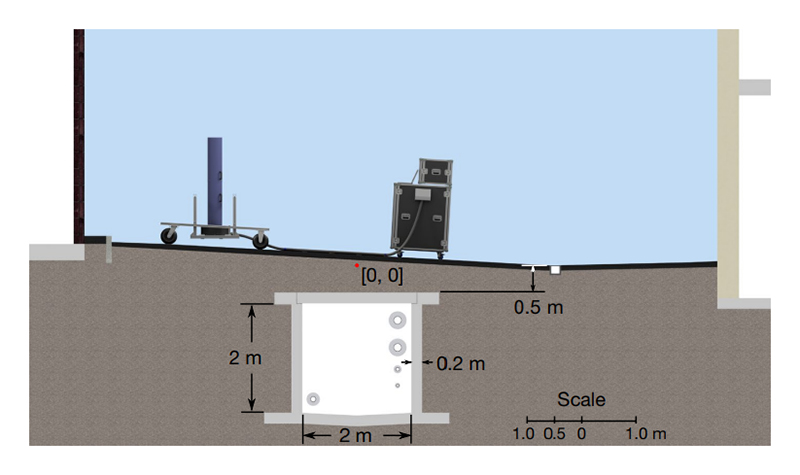Scientists would be able to discover much more about what lies underground if our planet could be sliced open and viewed as a cross-section – but as that’s not really possible, they have to rely on a variety of other methods instead.
One new approach has just been proven in the field: A recently developed device called a quantum gravity gradiometer has been used to successfully spot a tunnel buried a meter (a little over 3 feet) underground.
Typical gravity sensors work by comparing slight differences in the positions of identical light waves. This works fine for large structures, but for smaller hidden objects the shimmy and shake of the ground, the equipment, and even random thermal vibrations make it increasingly harder to make out details.
A quantum gravity sensor adds a filter that makes use of the wave-like nature of atoms in free-falling, ultra-cold clouds, radically improving the sensor’s resolution. The almost imperceptible differences in how gravity affects these atoms reveal the composition of the ground underneath, highlighting gaps in the ground such as tunnels.
 The experimental setup. (Stray et al, Nature 2022)
The experimental setup. (Stray et al, Nature 2022)
“This is an ‘Edison moment’ in sensing that will transform society, human understanding and economies,” says physicist Kai Bongs, from the University of Birmingham in the UK.
“With this breakthrough we have the potential to end reliance on poor records and luck as we explore, build and repair. In addition, an underground map of what is currently invisible is now a significant step closer, ending a situation where we know more about Antarctica than what lies a few feet below our streets.”
The new instrument is a type of atom interferometer – devices which have been in development for more than 20 years. The challenge has been getting them into a size and form that means they can be deployed practically outdoors.
Now that the quantum gravity gradiometer has passed its first real-world test outside of the lab, it offers plenty of potential to be useful in any kind of scenario where we need to know what’s lying underground.
That could be laying the foundations for a new subway system, for example, or in trying to predict a volcanic eruption. The new instrument is cheaper, faster, and more comprehensive than many currently available alternatives, and should also be more reliable in its mapping.
In particular, the sensor excels at cutting out interference from vibrations, variations in temperature, and shifts in magnetic fields – all of which can make it difficult for pieces of equipment to figure out what’s lying underground.
“Detection of ground conditions such as mine workings, tunnels and unstable ground is fundamental to our ability to design, construct and maintain housing, industry and infrastructure,” says geophysicist George Tuckwell, from the University of Birmingham.
“The improved capability that this new technology represents could transform how we map the ground and deliver these projects.”
While this “new window into the underground” is operational, there are still some limitations in terms of the size and depth of the structures that can be detected, and how different a structure’s density needs to be from its surroundings.
Development on the device will continue, and the researchers are confident it can be made more portable and user-friendly in the future. It could get up to 100 times more sensitive with further study, the team behind the sensor says.
“It is expected that such performance will be achieved in practical instruments within the next 5-10 years,” write the researchers in their published paper.
The research has been published in Nature.
